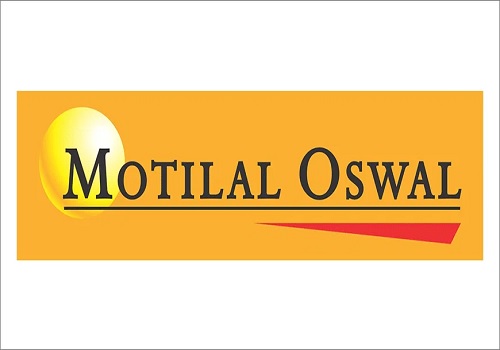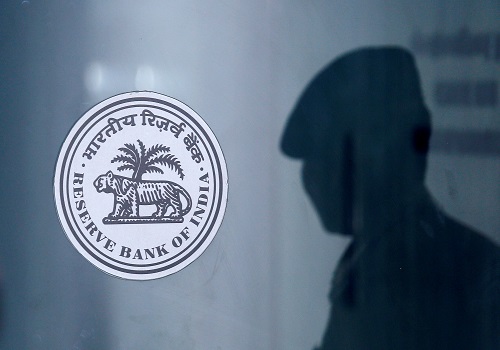Agri Commodity Technical Report 31 January 2023 - Geojit Financial Services

Follow us Now on Telegram ! Get daily 10 - 12 important updates on Business, Finance and Investment. Join our Telegram Channel
SPICES
• Except for jeera, other spices were down on NCDEX on Monday. Jeera futures bounced up after the recent correction on expectation of lower production and low carry over stocks. In the meantime, rise in arrival on new crop maintained downwards pressure on turmeric futures. Rise in arrival weighed on coriander futures as well.
• Spices Board today said it had rescheduled the 14th edition of World Spice Congress from February to Sep 15-17. The congress is scheduled to be held at the CIDCO Exhibition and Convention Centre in Navi Mumbai. The rescheduling is due to constraints in international travel owing to the COVID-19 situation in some of the major spice importing countries. "The venue for the event will remain the same and all existing registrations of delegates and exhibition stalls will be carried forward to the rescheduled event," the board said.
• According to the Spices Board, India exported 572890.71 tons of spices during Apr-Aug 2022, down by 14 per cent, compared to 666540.53 tons exported during the same time period a year ago. Export of jeera stood at 91505.49 tons, down by 26 per cent, while that of coriander is seen at 18557.72 , down by 12 per cent. In the meantime, both turmeric and small cardamom exports rose by 15 respectively and pepper exports increased seven per cent. Small cardamom export stood at 3794.69 tons, while that of turmeric and pepper was 74393.62 and 9587.86 tons respectively.
• The value of India's spices market is expected to rise to 1 trln rupees by 2025 from 800 bln rupees this year, with the share of the organised sector likely to reach 50% from 38%, according to experts at the National Spice Conference. Currently, the value of the organised segment is pegged at 300 bln rupees. Improved quality, introduction of smaller stock-keeping units and increased shelf life of spices is one of the major reasons for growth of the organised segment, Ramkumar Menon, chairman of World Spice Organisation, said at the conference. Growth prospects in the case of spices are high and branding plays an important role, as it not only makes a memorable impression on consumers, but allows customers and clients to know what to expect from a company. It is a way to distinguish oneself from competitors and clarify what makes one a better choice, according to a panel of experts at the conference. Currently, the branded spices market is growing at a compounded annual rate of 10-15%, against 7-10% in the case of the unorganised segment. India, the world's largest producer, exporter, and consumer of spices, produces 75 of its 109 varieties. Around 85% of the spices produced in India are consumed domestically. The country accounts for more than 48% of global demand.

COTTON
• The US Department of Agriculture has lowered its estimate for global cotton output for 2022-23 (Aug-Jul) slightly to 115.4 mln bales (1 US bale = 218 kg) from 116.7 mln bales projected a month ago. The reduction in the estimate is attributed to a decline in production in India, the department said in its World Agricultural Supply and Demand Estimates report for January. Cotton production in India for 2022-23 (Aug-Jul) is seen falling to 26.5 mln bales from 27.5 mln bales estimated in December. However, output of the commodity is estimated to rise a tad in Brazil to 12.3 mln bales and 14.7 mln bales in the US. In December, the agency estimated cotton production to be 14.2 mln bales and 13.0 mln bales in the US and Brazil, respectively, for 2022-23. The agency sees global cotton consumption at 110.9 mln bales, down 850,000 bales from its projection in December. The consumption is seen lower due to a decline in use of mills in India, Indonesia and Vietnam, the report said. Global ending stocks of cotton in 2022-23 are pegged at 89.9 mln bales, up 370,000 bales from the figure projected last month. For India, the domestic consumption is seen at 22.5 mln bales, down 500,000 bales projected in December. Exports have been revised lower at 3.1 mln bales from 3.4 mln bales last month. Cotton ending stocks in India for 2022-23 are now seen at 11.2 mln bales, lower than 11.4 mln bales projected a month ago, the report said.
• The Cotton Association of India has retained its production estimate for the 2022-23 (Oct-Sep) season at 34.4 mln bales (1 bale = 170 kg), it said in a press release. Production of cotton in north zone, which includes Punjab, Haryana and Rajastan, is estimated at 4.7 mln bales by the association. The estimate for the central zone, which includes Gujarat, Maharashtra and Madhya Pradesh, is 19.8 mln bales. The estimate for the south zone is 9.2 mln bales. Other small states account for rest of the output. Total supply of cotton for the 2022-23 season is estimated at 38.8 mln bales. The association estimates imports at 1.2 mln bales, 200,000 bales lower from the previous year. Exports are seen at 3.0 mln bales, lower by 1.3 mln bales from the previous year. Arrivals of cotton as on Oct 31 were estimated at 1.8 mln bales by the association. The association sees closing stock of cotton as on Sep 30, 2023 at 5.8 mln bales.
• The area under cotton across India in 2022-23 (Jul-Jun) season was over 12.7 mln ha as of Thursday, up 7.5% from a year ago, data from the farm ministry showed. Sowing has been completed in northern states and acreage in Haryana, the top producer in the region, fell 5.4% on year to 650,473 ha. In Punjab, it fell 2.4% to 248,000 ha. Inadequate power supply for irrigation and non-availability of canal water during the initial sowing stage led to a drop in acreage in the northern states, experts said. In Gujarat, acreage rose to 2.5 mln ha as against 2.2 mln ha a year ago. In Maharashtra, the area under the crop increased 7.3% on year to 4.2 mln ha, while in Telangana, it fell 2.2% to 2.01 mln ha. Gujarat is the top producer of cotton in India, followed by Maharashtra and Telangana. Together, Gujarat and Maharashtra account for 50-55% of the country's total production.
• According to a circular from MCX, the exchange is in process of modifying the Cotton contract specification. Accordingly, with effect from August 29, 2022, no fresh positions will be permitted in Cotton January 2023 expiry contract which has currently nil open interest. Cotton February 2023 expiry and subsequent expiry contracts will temporarily not be launched for trading till such time the revised contract specification is finalized. No changes for other running Cotton contracts with Open Interest.

OTHERS
• The area under rabi chana across the country was at 11.1 mln ha as of Wednesday, down 1.4% on year, data from the farm ministry showed. The decline was primarily due to lower sowing in Andhra Pradesh, Gujarat, and Madhya Pradesh. On a week-on-week basis, however, the total acreage rose 0.3% from 11 mln ha, data showed. In Maharashtra, the second-largest grower, chana was sown across 2.8 mln ha, up 10.4% on year. In Rajashthan, it was sown across 2.1 mln ha, up 4.9% on year. The acreage in Madhya Pradesh, the top grower, declined 11.1% to 2.2 mln ha. In Gujarat, it fell 31% to 764,000 ha, whereas it declined by 15.4% to 341,000 ha in Andhra Pradesh.
• Farmers in Maharashtra have sown chana over 2.8 mln ha as of last Monday, up 9% on year, data from the state agriculture department showed. Maharashtra is a key chana growing state along with Rajasthan, Madhya Pradesh, and Gujarat. The total area under rabi pulses in Maharashtra was at 3 mln ha, up 10% on year, according to the data. Maharashtra is the top producer of pulses, along with oilseeds and wheat. Among oilseeds, acreage of safflower has increased 46.4% on year to 29,375 tn, data showed. However, the acreage under sunflower was down 10.2% on year at 7,264 ha. Sowing of wheat also continued to gain momentum in Maharashtra where the area rose by 9.4% on year to 1.1 mln ha. Maharashtra's overall rabi acreage so far has risen 6.6% on year to 6 mln ha.
• The farm agency of Canada sees chana prices in 2022-23 (Aug-Jul) higher at $1,025 per tn from its estimate of $1,000 per tn in November because of lower world supply. Canada is one of the biggest exporters of pulses to India. "Crop quality is average when compared to the previous year. Supply of chana is forecast to fall by 16% as lower carry-in stocks more than offset the higher production," Agriculture and Agri-Food Canada said in its December report. The farm agency has left price estimates for masur, dry peas, and dry beans unchangedfrom last month at $800 per tn, $460 and $1,210, respectively. World chana output is seen rising to 128,000 tn in 2022-23 from 76,000 tn last season because of higher harvested area and yields, according to the report. The agency has also raised its production estimate for masur to 2.3 mln tn from 1.6 mln tn in the previous year due to higher productivity. Production of dry beans is seen lower at 313,000 tn in this crop year against 386,000 tn a year ago, according to the report.
• The Union Cabinet approved 2-9% hike in the minimum support price of six rabi crops for the coming marketing season starting April.The minimum support price of wheat has been increased by 5.5% to 2,125 rupees per 100 kg, while that of chana was raised by 2.0% to 5,335 rupees per 100 kg, the government said. Wheat, the crucial rabi crop, accounts for over 70% of the rabi foodgrain output, and chana is the largest rabi pulse crop. Minimum support prices, or the rates at which the government buys crops from farmers in case prices slip in the market, gives security and direction to growers in terms of realisation from their produce. They also help boost production of a desired crop. The Cabinet also approved increasing minimum support price of mustard by 7.9% to 5,450 rupees per 100 kg, and for masur by 9.1% to 6,000 rupees per 100 kg. The support price for barley was increased by 6.1% to 1,735 rupees per 100 kg. In the fourth advance estimate, the government predicted output of wheat in the 2021-22 (Jul-Jun) crop year at 106.8 mln tn, while oilseed production is pegged at 37.69 mln tn. Pulses output was seen at 27.69 mln tn, against 27.75 mln tn estimated in the third advance estimate.
• India’s Guar split exports increased in the month of November ’2022 by 18% to 4,500 MT as compared to 3,800 MT previous month. However, the Guar split shipments up by 72% in November ’22 compared to the same period last year. Out of the total exports, around 2,900 MT (64.44%) was bought by China, 900 MT (20%) bought by the USA, 580 MT (12.89%) by Canada and 120 MT (2.67%) bought by Russia. India’s Guar gum exports decreased in the month of November ‘2022 by 11% to 20,018 MT compared to 22,466 MT during previous month. However, the gum shipments went up by 15% in November 2022 compared to the same period last year. Out of the total exported quantity, around 7975 MT (39.84%) was bought by the US, Russia bought 2,776 MT (13.87%), Germany 1,650 MT (8.24%), China 852 MT (4.26%) and Canada 739 MT (3.69%). We expect Guar gum export in Dec ’22 around 22,000-25,000 tonnes.
To Read Complete Report & Disclaimer Click Here
For More Geojit Financial Services Ltd Disclaimer https://www.geojit.com/disclaimer
SEBI Registration Number: INH200000345
Views express by all participants are for information & academic purpose only. Kindly read disclaimer before referring below views. Click Here For Disclaimer










Top News

Expert Views: India holds interest rates steady at record lows as economic outlook improves
Tag News

We anticipate immense potential benefits from the upcoming Sovereign Gold Bond Tranche in FY...


 320-x-100_uti_gold.jpg" alt="Advertisement">
320-x-100_uti_gold.jpg" alt="Advertisement">










